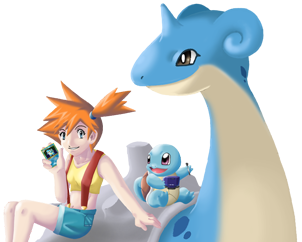Animal euthanasia (from the Greek meaning "good death") is the act of putting to death painlessly or allowing to die, as by withholding extreme medical measures, an animal suffering from an incurable, esp. a painful, disease or condition.[1] Euthanasia methods are designed to cause minimal pain and distress. Euthanasia is distinct from animal slaughter and pest control, which are performed for purposes other than an act of mercy, although in some cases the killing procedure is the same.
In domesticated animals, this process is commonly referred to by euphemisms such as "lay down", "put down", "put to sleep", "destroyed", or "put out of its/his/her misery".
Intravenous anesthetic
Pets are almost always euthanased by intravenous injection, typically a very high dose of pentobarbital or sodium thiopental. Unconsciousness, respiratory then cardiac arrest follow rapidly, usually within 30 seconds.[2] Observers generally describe it as a quick and peaceful death.
Some veterinarians perform a two-stage process: An initial injection that simply renders the pet unconscious and a second shot that "puts it to sleep".[citation needed] This allows the owner the chance to say goodbye to a live pet without their emotions stressing the pet. It also greatly mitigates any tendency toward spasm and other involuntary movement (i.e., the pet's facial or eye movement) which would tend to increase the emotional upset that the pet's owner is already experiencing.
For large animals, the volumes of barbiturates required are considered by some to be impractical, although this is standard practice in the US.[3] In some cases, shooting (see below) is considered appropriate. Alternatively, for horses and cattle, other drugs may be available. Some specially formulated combination products are available, such as Somulose (Secobarbital/Cinchocaine) and Tributame (Embutramide/Chloroquine/Lidocaine), which cause deep unconsciousness and cardiac arrest independently, with a lower volume of injection, thus making the process faster, safer, and more effective.
Occasionally, a horse injected with these mixtures may display apparent seizure activity before death. This may be due to premature cardiac arrest. However, if normal precautions (e.g., sedation with detomidine) are taken, this is rarely a problem.[4] Anecdotal reports that long term use of phenylbutazone increase the risk of this reaction are unverified.
Stray animals are sometimes put to sleep by animal shelters that put unclaimed and unadopted dogs and cats in a sealed chamber and pump the air out. The animal dies of anoxia.
-------------
Shooting
This can be an appropriate means of euthanasia for large animals (e.g., horses, cattle, deer) if performed properly. This may be by means of:
Free bullet
Traditionally used for shooting horses. The horse is shot in the forehead, with the bullet directed down the spine through the medulla oblongata, resulting in instant death.[7] The risks are minimal if carried out by skilled personnel in a suitable location.
Captive bolt
Commonly used for cattle and other livestock. The bolt is fired through the forehead causing massive disruption of the cerebral cortex. In cattle this stuns the animal, though if left for a prolonged period it will die from cerebral oedema, though this is a huge welfare problem. Death should be rapidly brought about by pithing or exsanguination. Horses are killed outright by the captive bolt, making pithing or exsanguination unnecessary.[8]

